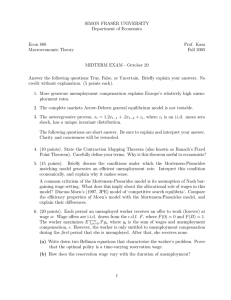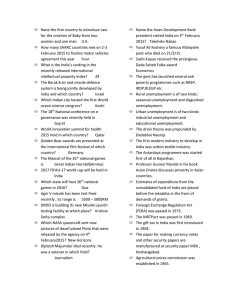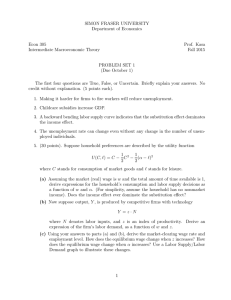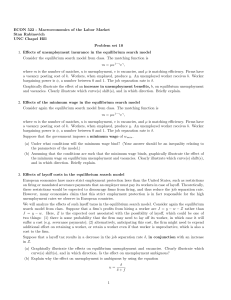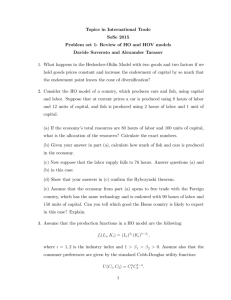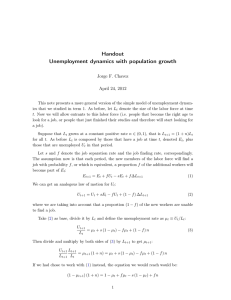SIMON FRASER UNIVERSITY Department of Economics Econ 809 Prof. Kasa
advertisement
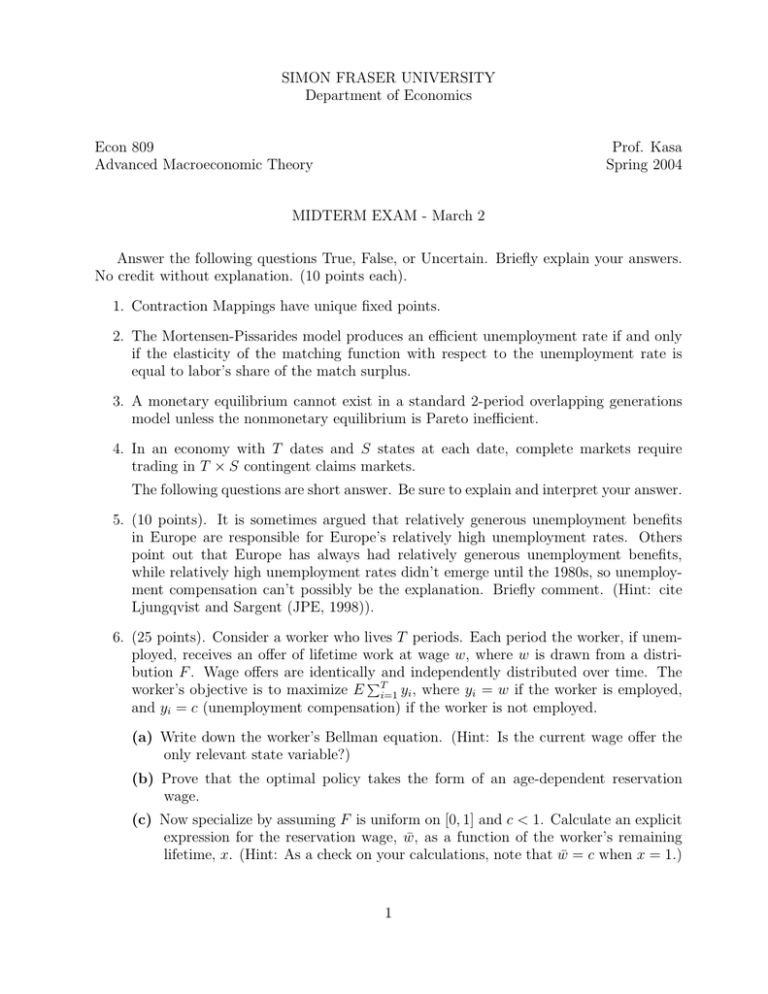
SIMON FRASER UNIVERSITY Department of Economics Econ 809 Advanced Macroeconomic Theory Prof. Kasa Spring 2004 MIDTERM EXAM - March 2 Answer the following questions True, False, or Uncertain. Briefly explain your answers. No credit without explanation. (10 points each). 1. Contraction Mappings have unique fixed points. 2. The Mortensen-Pissarides model produces an efficient unemployment rate if and only if the elasticity of the matching function with respect to the unemployment rate is equal to labor’s share of the match surplus. 3. A monetary equilibrium cannot exist in a standard 2-period overlapping generations model unless the nonmonetary equilibrium is Pareto inefficient. 4. In an economy with T dates and S states at each date, complete markets require trading in T × S contingent claims markets. The following questions are short answer. Be sure to explain and interpret your answer. 5. (10 points). It is sometimes argued that relatively generous unemployment benefits in Europe are responsible for Europe’s relatively high unemployment rates. Others point out that Europe has always had relatively generous unemployment benefits, while relatively high unemployment rates didn’t emerge until the 1980s, so unemployment compensation can’t possibly be the explanation. Briefly comment. (Hint: cite Ljungqvist and Sargent (JPE, 1998)). 6. (25 points). Consider a worker who lives T periods. Each period the worker, if unemployed, receives an offer of lifetime work at wage w, where w is drawn from a distribution F . Wage offers are identically and independently distributed over time. The T worker’s objective is to maximize E i=1 yi , where yi = w if the worker is employed, and yi = c (unemployment compensation) if the worker is not employed. (a) Write down the worker’s Bellman equation. (Hint: Is the current wage offer the only relevant state variable?) (b) Prove that the optimal policy takes the form of an age-dependent reservation wage. (c) Now specialize by assuming F is uniform on [0, 1] and c < 1. Calculate an explicit expression for the reservation wage, w̄, as a function of the worker’s remaining lifetime, x. (Hint: As a check on your calculations, note that w̄ = c when x = 1.) 1 7. (25 points). Consider the following 2-period overlapping generations economy. Each period an even number N of young agents are born. Half the young agents are endowed with w1 when young and 0 when old. The other half are endowed with 0 when young and w2 when old. Assume 0 < w2 < w1 . Preferences of all young agents are given by ln ct (t) + ln ct (t + 1), where ct (s) denotes consumption at date-s of generation-t. Half of the initial old generation are endowed with w2 units of the consumption good and half are endowed with nothing. Each old person orders consumption streams by c01 . Each old person at t = 1 is endowed with M units of unbacked fiat currency. No other generation is endowed with currency. The stock of currency is fixed over time. (a) Calculate the savings function of each of the two types of young agents for t ≥ 1. (b) Define an equilibrium without valued fiat currency. Compute all such equilbria. (c) Define an equilibrium with valued fiat currency. Compute all such (nonstochastic) equilibria. (d) Prove that there is a unique stationary monetary equilibrium. (e) Are the various monetary equilibria Pareto ranked? If so, how? If not, why not? 2
